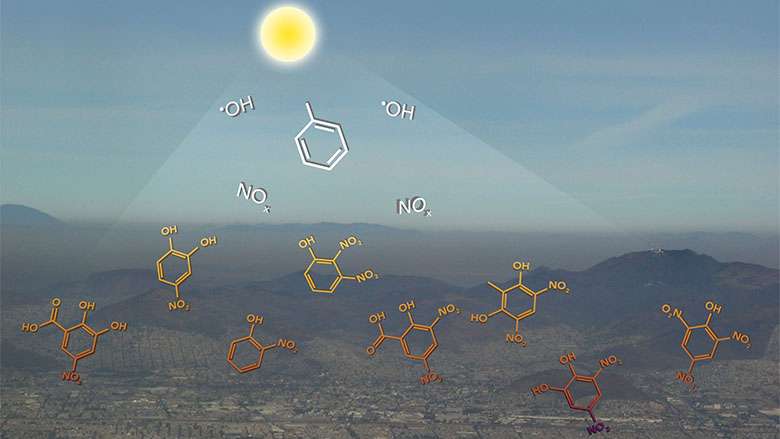Light-absorbing particles identified in environmental chamber experiments

Ubiquitous yet mysterious. Light-absorbing, carbon-containing particles, also known as brown carbon, are prevalent in the atmosphere yet highly variable. Scientists are working to fill in knowledge gaps in how they form, their chemical properties, and how much light they absorb.
A research team led by Pacific Northwest National Laboratory conducted controlled experiments in PNNL's environmental chamber to mimic the chemical reactions taking place in the atmosphere. They looked at the impact of different particle ingredients (precursors), the reaction conditions (temperature and light), and the amount of atmospheric moisture (relative humidity) on brown carbon formation and aging. The results suggest that brown carbon formed from common, human-caused pollution could have a significant impact on the energy balance of the Earth. Further, their work indicates the need to carefully revisit how brown carbon is represented in climate models.
There are two types of carbon-containing (organic) atmospheric particles and both are very good at absorbing sunlight—thus, important to consider as atmospheric warmers. Black carbon particles are fine particulates emitted by high-temperature burning primarily of fossil fuels, such as in diesel engines. Brown carbon particles are emitted by combustion of organic materials, or biomass, such as natural or human-caused fires, crop residue, and land clearing. However, recent research has shown that brown carbon can also be formed when mixtures of natural and human-made chemicals react together in the atmosphere in the presence of sunlight to produce "secondary" organic aerosols (SOA). The research suggests that this secondary brown carbon could have significant impacts on local or regional climate, providing new insights on how to better evaluate SOA impacts in climate models.

The PNNL research team, including collaborators from Concordia University, conducted a series of experiments in PNNL's environmental chamber to investigate the effects of several well-controlled parameters on brown carbon absorption, including volatile organic carbon precursor types, nitric oxide concentrations, relative humidity levels and light exposure (photolysis aging time). In addition to using the solution-based spectrometer to measure light absorption, they also applied mass-spectrometry techniques to dig into the chemical compositions of SOA products. These measurements combined provide information on both refractive indices, or light absorption coefficients of brown carbon and their chemical properties.
Researchers are planning a more detailed analysis of chemical compositions responding to light absorption. The inherent SOA formation mechanisms, which are substantially altered by environmental conditions, are an additional avenue of inquiry.
More information: Jiumeng Liu et al. Optical properties and aging of light-absorbing secondary organic aerosol, Atmospheric Chemistry and Physics (2016). DOI: 10.5194/acp-16-12815-2016
Journal information: Atmospheric Chemistry and Physics
Provided by Pacific Northwest National Laboratory





















